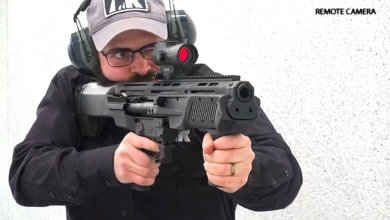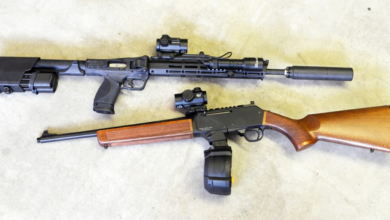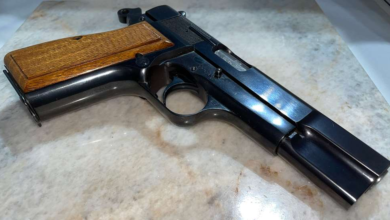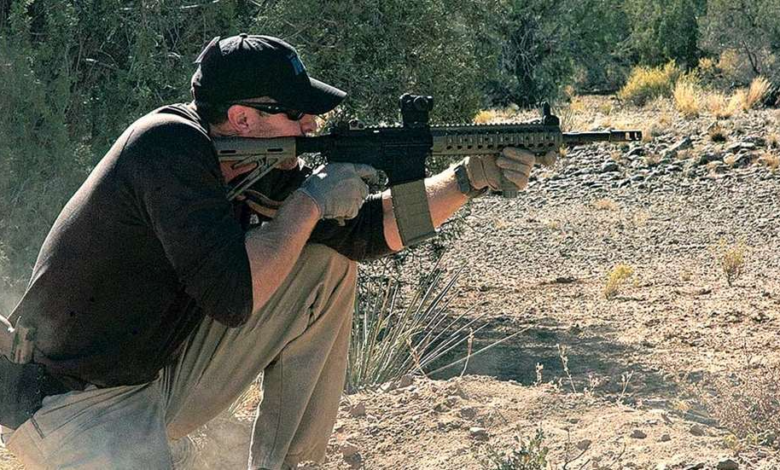
Consumer demand can be a fickle friend to businesses that stock firearms. While overall gun sales have remained brisk since I entered the industry as a custom manufacturer and gunsmith in 2009, interest in specific firearm types tends to ebb and flow. As a result, a gun shop can easily get caught between having stagnant inventory that suddenly fell out of favor and not having enough of the latest, high-demand firearms. However, two categories that remain fairly constant are concealed-carry handguns and AR-style rifles (or large-format pistols). We’ll focus on the AR-15-style firearms here.
The modular, utilitarian design of ARs (and similar platforms) is near the top of a long list of factors that drive the platform’s popularity. Home defense, hunting, emergency preparedness, target shooting and competition are the most common intended uses I hear from customers, in that order. If you’re a new member of the modern sporting rifle (MSR) club, welcome aboard. Your next logical step is to become intimately familiar with your AR, before you dump a bunch of money into accessories that marketing gurus guarantee will make you the envy of the range.
If you left the gun shop with an armload of extra gear, that’s OK. But before you accessorize your new purchase into something that’s no longer fun to carry, it will help your long game to focus on the basics. The prevalence of basic operation and maintenance questions from my customers demonstrates that an early emphasis on those topics is a critical part of new MSR owners’ first steps.
If your firearm came with an owner’s manual, that’s a good place to start. If it didn’t, a simple search for “Free AR-15 Owner’s Manual” will return more than a hundred, downloadable PDF manuals that are made available by various AR manufacturers. While there are many gazillabytes’ worth of AR-specific instructional videos available on the web, quality varies widely. Therefore, I recommend you stick with videos from your firearm’s manufacturer or a trusted source if you prefer watching over reading.

Focus on learning the steps for safely and efficiently loading, aiming, firing, unloading, clearing malfunctions or stoppages and maintaining your AR. That last one is an important detail that often goes overlooked until an operating system is so gunky and fouled that it’s causing problems. While this creates good work for gunsmiths, most of us would prefer that our customers simply clean their firearms more often than every Leap Year. More importantly, taking regular care of your MSR is the best way to ensure that it will take care of you, if the need should ever arise.
Even though you don’t need to go hog-wild with accessories just yet, there are a few things that will prove helpful as you start down the familiarization path. Ammunition is an obvious must-have and if your new MSR shares a chambering with another firearm you own, using ammo that’s already on hand makes sense. If you don’t have the correct chambering, I recommend just buying a box or two of several different factory loads. That way, you aren’t stuck with 500 rounds of something your semi-auto doesn’t shoot accurately or reliably. Eventually, the hope is that you’ll identify a couple less-expensive target loads that shoot better than others in the firearm, as well as any other ammo types you may need for hunting, precision or defensive use. Also, a few spare magazines will help make your range time more enjoyable, as well as giving you some peace of mind if your AR will be relied on for something more serious than punching paper targets or ringing steel.
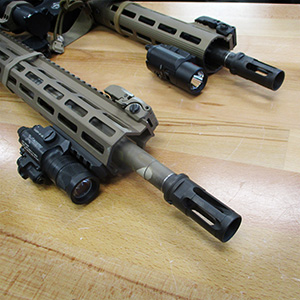
Twenty years ago, a new AR would almost certainly have had some form of “iron” sights on board—oftentimes fixed. Today, it’s just as common to get your rifle or large format pistol in an “Optics Ready” configuration, sans sights. That means it will have some sort of flat top rail that allows easy attachment of removable open sights, a red dot optic or a riflescope. If your MSR came with basic sights, they’ll be just fine for working through the basics. They can also do long-term duty, so long as the sights work for your eyes and needs. Even if they’re destined to serve as back-ups, you’ll already have learned how to adjust and employ the open sights effectively by the time you get around to mounting a primary optic.
Regardless of sighting system, you’ll need to decide on a distance at which to zero your new AR. Many people choose some variation of the 50/200 zero, where the sights are adjusted so that your point of impact (POI) meets your point of aim (POA) at either 50 or 200 yards (or meters). Some cartridges, such as 5.56 NATO, often impact very close to POA at both distances without any need to hold over or under. The tried-and-true 100 yard (or meter) zero is also very popular. Regardless of the zero range you choose, spend time at other distances, learning where you need to hold your sights in order to hit an intended POI. Just about every major ammunition manufacturer has a simplified ballistic application or web-based trajectory calculator available for free, making it easy to play around with different zero distances in order to see which one best fits your needs and ammo type.
Once you have the basics of operating and maintaining your new tool, you can branch out to other practical skills while adding some practical enhancements. Good examples of the latter are a weapon-mounted light and quick-adjust sling. Having a good gun light—that you can employ effectively—is an important component of any home defense plan that involves a firearm. A properly employed sling will free up your hands for all sorts of tasks, whether hunting afield or dealing with an emergency.
Other useful skills include longer distance shooting, reloading under pressure, transitioning from one target to another and shooting while moving. Mastering each of those subjects requires regular practice and, as I’ve written many times before, some form of professional instruction will help you start off on the right foot. Ultimately, you’ll be well served once your AR is familiar enough that you can operate it safely and effectively in an emergency, without having to stop and think about the basics.

